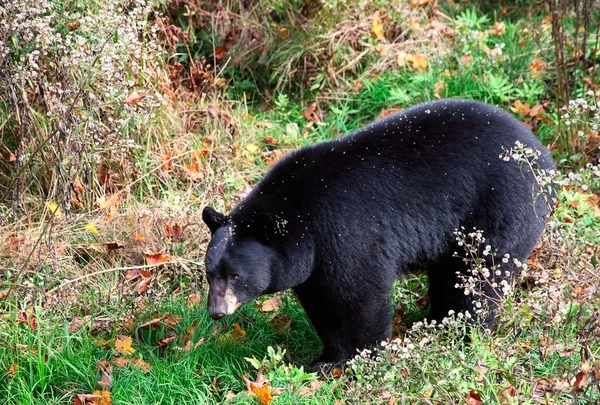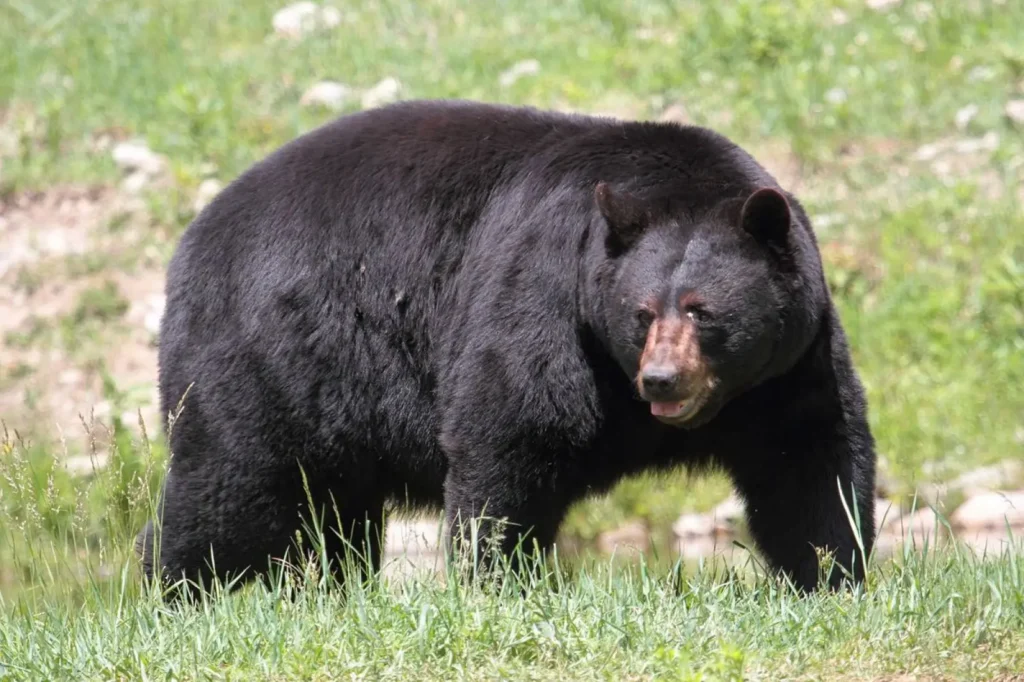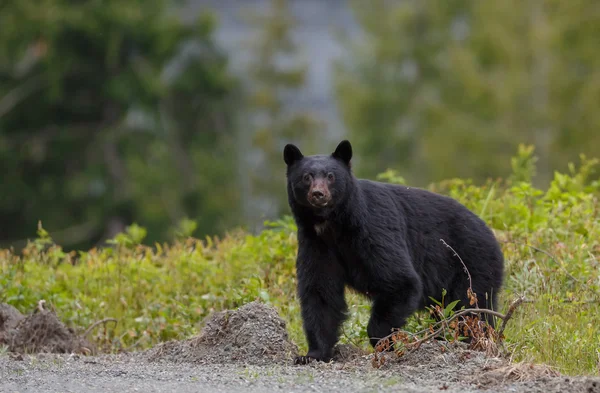American Black Bear (Ursus americanus) is one of the most common bear species in North America. Despite its name, its color can vary from black to brown, red and even white. It is an extremely intelligent and adaptable species that easily survives in a variety of ecosystems, from dense forests to mountainous regions.
With a flexible omnivorous diet, an excellent sense of smell, and agility, the American black bear is a master of survival. In this article, we will look in detail at its biological features, lifestyle, food habits, reproduction, as well as threats and protection measures.

1. General characteristics of the American Black bear
🔬 Scientific classification:
✔ The Kingdom: Animals (Animalia)
✔ Type: Chordal (Chordata)
✔ Class: Mammals (Mammalia)
✔ Row: Predatory animals (Carnivora)
✔ Family: Bearish (Ursidae)
✔ Gender: Bears (Ursus)
✔ View: American Black Bear (Ursus americanus)
📍 Habitat range:
✔ United States (Alaska, California, Florida, Appalachia)
✔ Canada (British Columbia, Ontario, Quebec)
✔ Mexico (northern regions)
📏 Sizes:
✔ Body Length: 1.2-2m
✔ Height at the withers: 70-105 cm
✔ Weight: males-60-300 kg, females-40-180 kg
🏃 Speed:
✔ Running-up 55 km / h
✔ Swimming – up to 6 km / h
✔ Climbing trees-excellent abilities, unlike a brown bear
🌡 Temperature range:
✔ Can withstand -40°C to +35°C
📌 Interesting!
The largest recorded black bear weighed 409 kg and it was polished in North Carolina!
2. subspecies of the american black bear
There are over 16 subspecies, among which the most famous ones are:
🔹 Florida Black Bear (Ursus americanus floridanus) - smaller in size, lives in Florida.
🔹 Himalayan Black Bear (Ursus Americanus kermodei) - a rare white subspecies known as the "ghost bear" (Kermode bear).
🔹 California Black Bear (Ursus americanus californiensis) - lives in the mountain forests of California.
🔹 Olympic Black Bear (Ursus americanus altifrontalis) - dark color, lives in the mountains of Washington.

3. Appearance and anatomy
🔹 Wool:
The hair is usually black, but it can be brown, red, or even white
✔ Thick and long, protects from the cold
🔹 Paws and claws:
✔ Front paws are adapted for digging
✔ Large curved claws (up to 8 cm) that help you climb trees
🔹 Head and muzzle:
✔ Elongated muzzle, often with a light spot
✔ Extremely developed sense of smell – u 7 times better than a dog
📌 Interesting!
American black bears can easily stand on their hind legs to get a better view of the area.
4. lifestyle and behavior
🏡 Territory:
✔ Males occupy territories up to 500 km2, females – up to 20 km2
✔ Territorial conflicts are rare
🛶 Migrations:
✔ In search of food can pass up to 50 km per day
🌙 Daily activity:
✔ In summer-active mostly during the day
✔ In autumn-active at night
📌 Interesting!
American black bears can open doors, containers, and even find food in cars!

5. eating habits and hunting behavior
🍽 Basic diet:
✔ 80% plant-based food-berries, herbs, nuts
✔ 20% animal food-insects, fish, carrion
🔪 Hunting methods:
✔ Collects berries, roots
✔ Catches fish with its paws
📌 Interesting!
Before wintering, the bear can gain up to 3 kg of body fat per day!

6. reproduction and life cycle
💑 Mating season:
✔ May-July
✔ Males can travel by 100 km in search of a female
🐣 Pregnancy and birth:
✔ Pregnancy – 6-7 months
✔ 1-4 cubs are born in winter
🐻 Mother and cubs:
✔ Cubs stay with their mother up to 2 years old
✔ Learn to find food and climb trees
📌 Interesting!
Newborn cubs weigh only 300-400 g!
7. hibernation
❄ How do bears spend the winter?
✔ Bears fall into hibernate for 4-6 months
✔ During sleep body temperature drops to 31-33°C
📌 Interesting!
Black bears can wake up during hibernation if disturbed!
8. threats and protection of the species
⚠ Main threats:
✔ Deforestation
✔ Car accidents
✔ Hunting and poaching
⚖ Security measures:
✔ Listed on the Red List in some states
✔ Protected in national parks
📌 Interesting!
Now in the USA lives close 800,000 black bears - this is the largest bear population in the world!
Conclusion
The American black bear is an intelligent, strong and extremely adaptable species that successfully survives even in human settlements. Its natural grace, cunning, and strength make it one of North America's most interesting predators.
Protection of this species is important for the conservation of forest ecosystems, as it plays a key role in seed distribution and regulating the abundance of other species.
